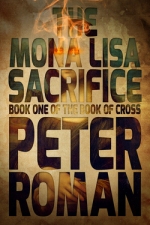If you’re a writer, you should check out Scrivener

When I was at Ad-Astra recently, I took part in a panel discussion called “How to Go Beyond Getting Started and Get Something Finished.” I was secretly hoping to learn something — and I did! There were some really great ideas put out there during the panel from both panelists and audience members, and I left thinking I had lots more to say on the subject. That’s always the sign of a good event, so well done to the organizers and all those who attended.
Given that I still had things I was excited to share, I thought I’d add my comments here in the form of a few blog posts, starting with a shoutout to Scrivener. If you’re a writer and you haven’t used Scrivener yet, you should give it a try. It’s an incredibly useful tool, and I say that as someone who only uses a small portion of its features. Scrivener bills itself as “your complete writing studio,” and that’s a fair claim. It lets you store your research all in one place, organize your ideas and notes, create your outlines — and even write your novel! You can use different tools for all these things, of course, but Scrivener lets you store everything in one place, which is helpful for scatter-brained authors working on large projects.

I mainly use Scrivener for novels because it’s so handy for outlining. The program has a built-in feature that breaks up novels into chapters that you can see in sort of virtual index cards pinned to a corkboard. I add notes to the index cards talking about the plot beats in the chapter, how the chapter fits into the rising action of the book, what I need to set up in the following chapters, how this chapter builds on the previous one, etc. It’s a very handy way of seeing all the complicated stuff of the book in one glance — the story, the rhythm, the character arcs, the little subplots that need wrapping up, whatever. Before I started using Scrivener, I struggled to keep all that stuff in my head, which meant I was editing more than I needed to as I realized I’d totally forgotten to reveal what had become of that character stabbed in Chapter 3 — he died, they all died — or why I put that talking horse’s head in Chapter 5. Still not sure about that one, to be honest….
The breakdown of chapters into separate files makes it easy to move sections of the book around, save cut scenes, etc. I will admit that I have actually edited parts of my books simply by dragging and dropping. Some of you may not be surprised.
It’s also great for productivity to have your research files stored within Scrivener, so you don’t have to leave the application to look up the history of that castle on the web again, and seeing as you’re already online you may as well check Facebook — wait, what did that person say about my book? Now I have to write an angry response on Goodreads under a pseudonym!
It’s easy to export Scrivener files to Word and epubs and whatever else you like, and there is an iOS app. I haven’t used that yet so I can’t comment. I’m sure it’ll work well, though, as the desktop app has always been solid for me.
If you take this writing thing seriously, you should at least take a look at Scrivener. It may mean the difference between a never-ending work in progress and your next novel sale.
Posted on May 3, 2016, in Journal, Uncategorized. Bookmark the permalink. Leave a comment.








Leave a comment
Comments 0